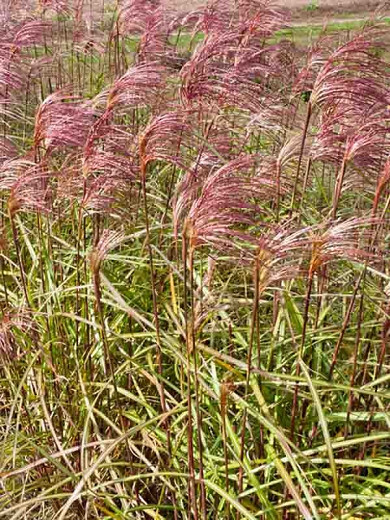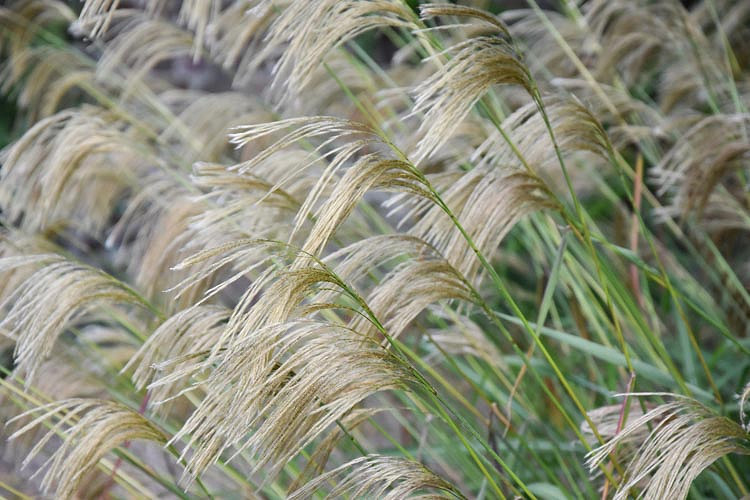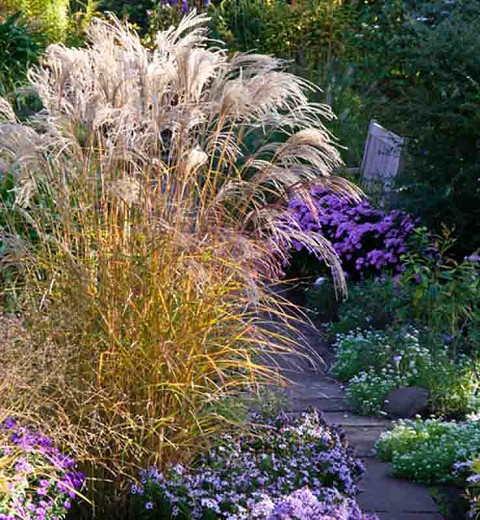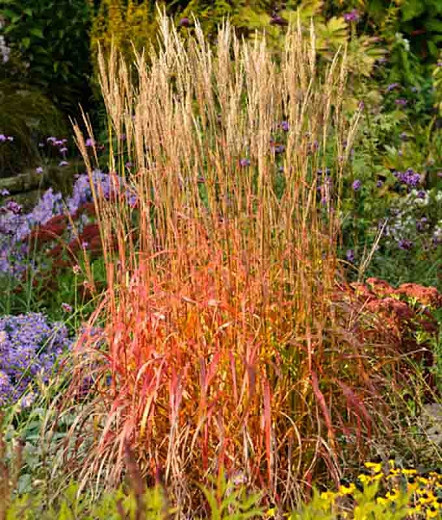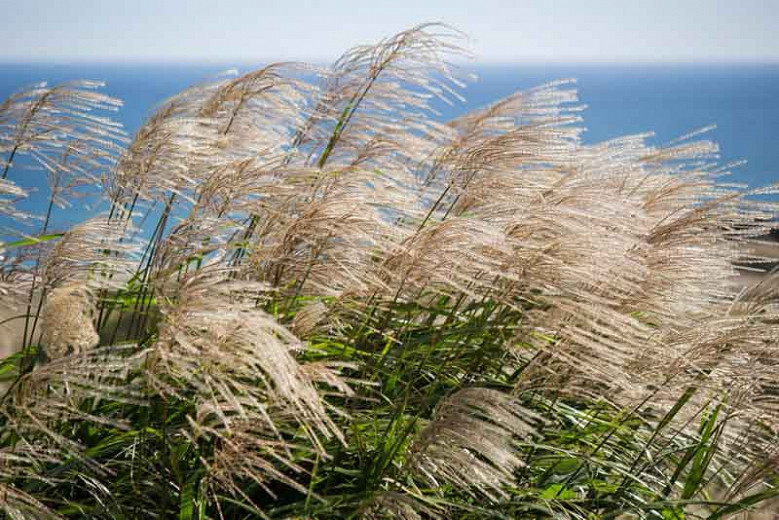Miscanthus sinensis Kleine Fontane (Chinese Silver Grass)
Compact and free-flowering, award-winner Chinese Silver Grass ‘Kleine Fontane’ (Miscanthus sinensis) or ‘Little Fountain’ in English, is a lovely ornamental grass with attractive, airy plumes which emerge red in mid to late summer and turn shiny silvery-white in the fall. Remaining attractive all winter, they rise well above a graceful foliage of narrow, arching green leaves adorned with white midribs.
Compact and free-flowering, award-winner Chinese Silver Grass 'Kleine Fontane' (Miscanthus sinensis) or 'Little Fountain' in English, is a lovely ornamental grass with attractive, airy plumes which emerge red in mid to late summer and turn shiny silvery-white in the fall. Remaining attractive all winter, they rise well above a graceful foliage of narrow, arching green leaves adorned with white midribs. The leaves turn to eye-catching yellow shades in the fall. Standing out beautifully in the garden and providing wonderful winter interest, you may want to treat this attractive Maiden Grass as a specimen plant. Perfect for small gardens.
- Recipient of the prestigious Award of Garden Merit of the Royal Horticultural Society.
- Deciduous, this perennial grass easily grows in a dense, upright clump up to 4-6 feet tall (120-180 cm) and 2-3 ft. wide (60-90 cm).
- Performs best in full sun in moderately fertile, moist, well-drained soils. Protect from excessive winter wet. Drought and salt tolerant once established.
- Very versatile, it can be used as a graceful accent plant in the garden, massed to create screens or hedges, planted in borders, coastal gardens, city gardens, cottage gardens or prairie plantings.
- This Chinese Silver Grass is generally pest and disease free. It is deer and rabbit resistant but attracts birds.
- Cut foliage to the ground in late winter before new shoots appear. Propagate by seed sown in pots in a cold frame in spring or by division in spring.
- Native to Asia, the species form of Miscanthus sinensis is invasive in several US states. The invasive potential is of less concern for many of its ornamental cultivars, some of which are sterile. However, as a general rule, do not plant more than one cultivar on your property, and use only a vegetatively propagated cultivar that has shown little or no evidence of self-seeding in your area.
- Discover beautiful U.S. native plant alternatives.
Requirements
| Hardiness | 5 – 9 |
|---|---|
| Heat Zones | 1 – 9 |
| Climate Zones | 2, 3, 4, 5, 6, 7, 8, 9, 10, 11, 12, 13, 14, 15, 16, 17, 18, 19, 20, 21, 22, 23, 24 |
| Plant Type | Ornamental Grasses |
| Plant Family | Miscanthus – Maiden Grasses |
| Exposure | Full Sun |
| Season of Interest | Summer (Mid,Late)FallWinter |
| Height | 4' – 6' (120cm – 180cm) |
| Spread | 2' – 3' (60cm – 90cm) |
| Spacing | 36″ – 72″ (90cm – 180cm) |
| Water Needs | Average |
| Maintenance | Low |
| Soil Type | Chalk, Clay, Loam, Sand |
| Soil pH | Acid, Alkaline, Neutral |
| Soil Drainage | Moist but Well-Drained, Well-Drained |
| Characteristics | Dried Arrangements, Cut Flowers, Plant of Merit, Showy |
| Tolerance | Deer, Drought, Rabbit, Salt |
| Attracts | Birds |
| Garden Uses | Beds and Borders, Hedges and Screens |
| Garden Styles | City and Courtyard, Coastal Garden, Informal and Cottage, Modern Garden, Prairie and Meadow |

